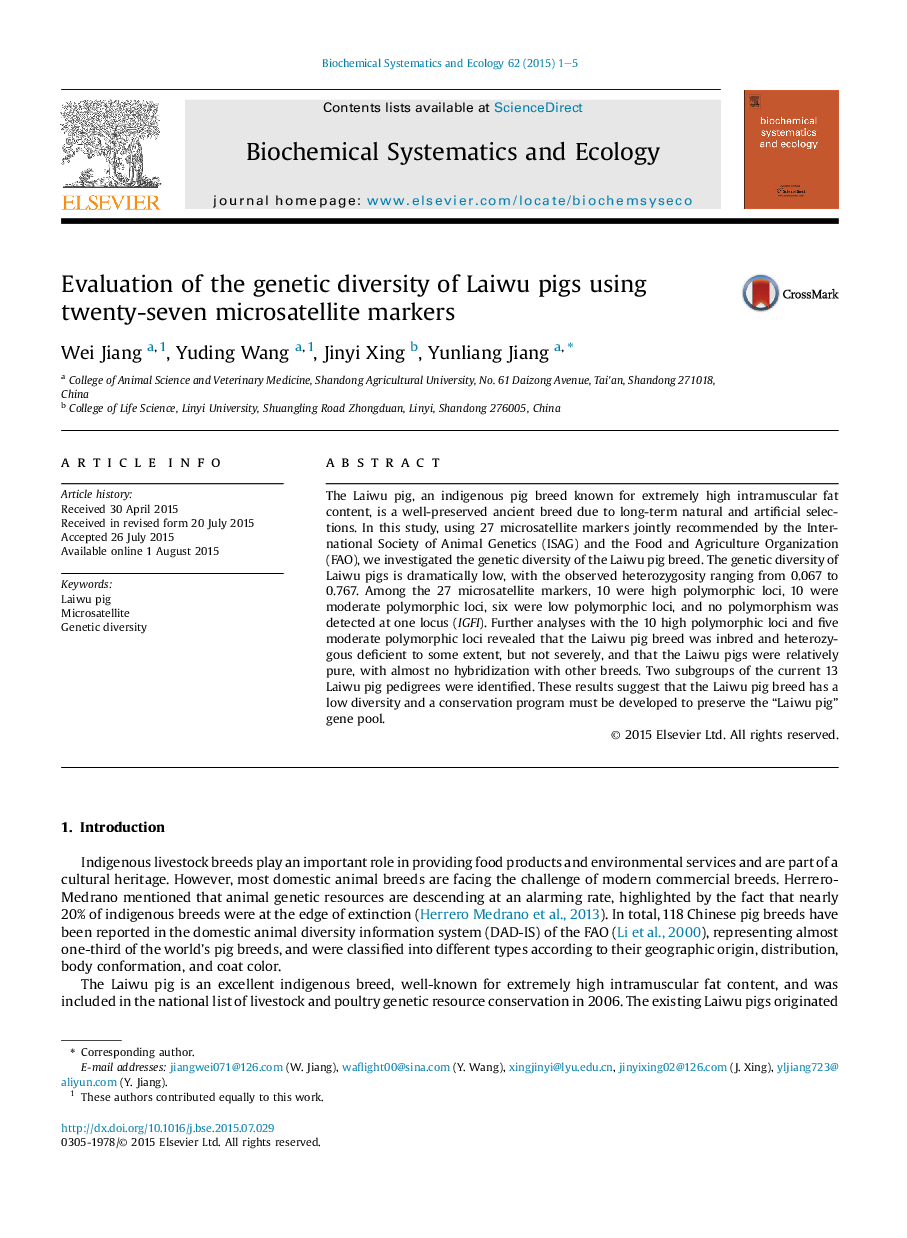| Article ID | Journal | Published Year | Pages | File Type |
|---|---|---|---|---|
| 1351261 | Biochemical Systematics and Ecology | 2015 | 5 Pages |
•The observed heterozygosity of the Laiwu pig ranges from 0.067 to 0.767.•Ten microsatellite loci were high, six were low and one was not polymorphic.•The Laiwu pig was inbred and heterozygous deficient to some extent, and almost no hybridization with other breeds.
The Laiwu pig, an indigenous pig breed known for extremely high intramuscular fat content, is a well-preserved ancient breed due to long-term natural and artificial selections. In this study, using 27 microsatellite markers jointly recommended by the International Society of Animal Genetics (ISAG) and the Food and Agriculture Organization (FAO), we investigated the genetic diversity of the Laiwu pig breed. The genetic diversity of Laiwu pigs is dramatically low, with the observed heterozygosity ranging from 0.067 to 0.767. Among the 27 microsatellite markers, 10 were high polymorphic loci, 10 were moderate polymorphic loci, six were low polymorphic loci, and no polymorphism was detected at one locus (IGFI). Further analyses with the 10 high polymorphic loci and five moderate polymorphic loci revealed that the Laiwu pig breed was inbred and heterozygous deficient to some extent, but not severely, and that the Laiwu pigs were relatively pure, with almost no hybridization with other breeds. Two subgroups of the current 13 Laiwu pig pedigrees were identified. These results suggest that the Laiwu pig breed has a low diversity and a conservation program must be developed to preserve the “Laiwu pig” gene pool.
